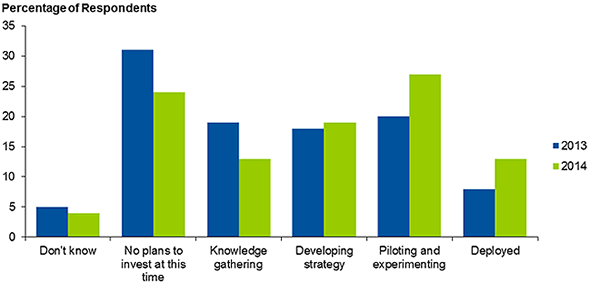 Market research company Gartner enumerated what it described as five big data myths.
Market research company Gartner enumerated what it described as five big data myths.
The company said that companies tended to believe that their competitors were ahead of them in the adoption of big data. But its survey showed that while 73 percent of organisation intending to invest or planning to invest in big data, most organisations are still in the “very early” staged of adoption.

Only 13 percent of the companies it surveyed had actually deployed anything. And companies face a challenge how to obtain value from big data.
The second myth is that many IT folk believe the large volume of data held means faults with individual flaws don’t matter. But, said Ted Friedman, a VP at Gartner: “Although each indiviidual flaw has a much smaller impact on the whole dataset than it did when there was less data, there are more flaws than before because there is more data.” The impact of poor quality data remains the same, he said.
Myth three is that big data technology removes the need for data integration.. But most information users rely heavily on scheme on write – meaning data is described, content is prescribed and there’s agreement about the integrity of data.
The fourth myth, according to Gartner, is that you don’t need a data warehouse for advanced analytics. But that’s not necessarily true – many advanced analytics projects use a data warehouse during an analysis.
And, finally, so-called “data lakes” aren’t going to replace data warehouses. A data lake is defined as enterprise wide data management that analyses different sources of data in their native file formats. Data lakes lack the maturity and breadth of features in established data warehouse technologies.





